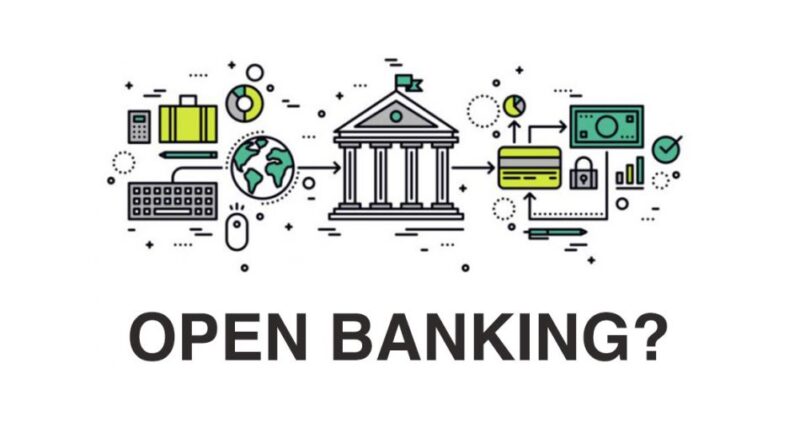In today’s fast-paced and digital world, staying ahead of the curve is essential for businesses to thrive. One way to do this is by embracing open banking, a revolutionary concept that is reshaping the financial industry. In this blog post, we will explore why open banking is crucial for your business’s success and how you can leverage it to drive growth and innovation. Get ready to unlock new opportunities and take your business to the next level with open banking!
Introduction to Open Banking
Open Banking is a financial technology innovation that is transforming the traditional banking industry. It refers to the sharing of customer data and financial transactions among different financial institutions through secure application programming interfaces (APIs). This enables customers to give third-party providers access to their financial information, allowing for more personalised and efficient services.
The concept of Open Banking emerged as a response to the dominance of large banks in the market, which limited competition and stifled innovation. With Open Banking, smaller financial institutions and fintech companies can now compete with established players by accessing customer data from multiple sources.
One of the main drivers behind Open Banking is enhanced customer experience. With traditional banking, customers often have to navigate between different platforms and accounts to manage their finances. However, with Open Banking, they can link all their accounts in one place and view their entire financial picture in real-time. This leads to better insights into spending habits and improved budget management.
Moreover, Open Banking also promotes greater transparency between banks and customers. By giving consumers control over who has access to their data, it increases trust in the industry while also fostering healthy competition among service providers. Customers are no longer tied down by long-term contracts or high fees as they have more options to choose from.
For businesses, implementing Open Banking can bring numerous benefits as well. By leveraging on APIs provided by different banks, businesses can streamline their payment processes, reduce costs associated with manual transactions, and gain more accurate insights into cash flow. Additionally, businesses can use this data for credit scoring purposes when seeking loans or other forms of financing.
It’s worth noting that security measures are paramount in Open Banking. Financial institutions must adhere strictly to strict security standards set by regulators such as GDPR (General Data Protection Regulation) in Europe and PSD2 (Payment Services Directive 2) in the UK. These regulations ensure that customer data is protected at all times during sharing between parties.
Open Banking presents a significant opportunity for both consumers and businesses to benefit from a more open, competitive, and efficient financial industry. Embracing this innovation can lead to improved customer satisfaction, increased efficiency, and better business performance. As the trend continues to grow globally, it’s crucial for businesses to stay ahead of the curve by adopting Open Banking in their operations.
What is Open Banking and How Does it Work?
Open banking has been a buzzword in the financial industry for the past few years, but many people are still unsure of what it actually means and how it works. In this section, we will provide an in-depth explanation of open banking and its mechanics.
So, what exactly is open banking? Simply put, it is a system that allows consumers to grant third-party providers (TPPs) access to their financial data. This data includes information such as account balances, transaction history, and credit card details. With this consent from the consumer, TPPs can then use this data to provide innovative financial products and services.
The concept of open banking was first introduced by the European Union with the implementation of the Payment Services Directive 2 (PSD2) in 2018. This directive aimed to increase competition and innovation in the financial sector by promoting collaboration between traditional banks and newer fintech players.
But how does open banking actually work? It all starts with an application programming interface (API). APIs act as intermediaries between different software applications, allowing them to communicate with each other. In simple terms, APIs enable TPPs to securely access a customer’s bank account information without having direct access to their login details.
When a customer wants to use a service provided by a TPP, they will be redirected to their bank’s website or app where they can grant consent for their data to be shared through APIs. The bank then shares specific information requested by the TPP through these APIs in real-time.
One of the key benefits of open banking is that it allows for secure sharing of data between different entities. Banks are required to ensure that all third parties requesting access are authorised and regulated by relevant authorities before granting them access. Additionally, customers have control over which accounts they want to share their data from and can revoke consent at any time.
So why should businesses embrace open banking? Firstly, it promotes innovation in financial services by allowing new players to enter the market and offer innovative products and services. This leads to increased competition, which can drive down costs for consumers.
Furthermore, open banking allows for more personalised and efficient financial services. With access to a customer’s financial data, TPPs can analyse their spending habits and provide tailored recommendations or solutions that best suit their needs.
Open banking is a game-changer in the financial industry, promoting collaboration between traditional banks and newer fintech players while also providing customers with more control over their data. Businesses that embrace open banking will stay ahead of the curve and reap the benefits of innovation and efficiency in their operations.
Benefits of Open Banking for Businesses
As businesses continue to adapt and evolve in the ever-changing digital landscape, one concept that has been gaining increasing prominence is open banking. Open banking refers to the practice of sharing financial information between banks and third-party service providers through secure application programming interfaces (APIs). This allows for greater transparency, accessibility, and innovation within the financial sector.
So, what are some of the specific benefits of open banking for businesses? Let’s take a closer look.
- Streamlined Financial Management: One of the key advantages of open banking for businesses is its ability to streamline financial management processes. By allowing third-party service providers access to their financial data, businesses can enjoy a more comprehensive overview of their finances in real-time. This makes it easier to track expenses, manage cash flow, and make informed decisions regarding investments and budgeting.
- Increased Efficiency: With open banking, manual processes such as data entry and paperwork can be replaced with automated systems that securely share crucial financial information with authorised parties. This not only saves time but also reduces the risk of human error. As a result, businesses can operate more efficiently and focus on other aspects of their operations.
- Enhanced Access to Financing: Open banking offers small businesses increased access to financing options that were previously difficult or impossible to obtain through traditional channels. By leveraging their financial data via APIs, small businesses can now provide lenders with a more accurate picture of their creditworthiness, potentially improving their chances for approval.
- Personalised Services: Another significant benefit of open banking is its potential for personalised services tailored to individual business needs. Third-party providers have access to detailed customer data from multiple sources, enabling them to offer customised products and services based on unique business requirements.
- Improved Security Measures: Contrary to popular belief, open banking does not compromise security; instead it enhances it through strict regulations and protocols put in place by regulatory bodies such as GDPR (General Data Protection Regulation) and PSD2 (Payment Services Directive 2). These measures ensure that all financial data shared through open banking is done so safely and securely.
Embracing open banking can bring numerous benefits to businesses of all sizes. From improved financial management to increased efficiency and access to financing, the potential for growth and innovation is vast. As we continue to see the digital landscape evolve, it is essential for businesses to stay ahead of the curve by embracing open banking as a crucial aspect of their operations.
Tips for Implementing Open Banking in Your Business
The concept of open banking has been gaining traction in the financial industry, and for good reason. With the rise of digitalization and increased customer demand for convenience and personalised services, open banking offers a promising solution for businesses to stay ahead of the curve. However, implementing open banking in your business can be a daunting task, especially if you are not familiar with its principles.
To help you successfully implement open banking in your business, here are some key tips to keep in mind:
1. Understand the Basics:
Before jumping into any new venture, it is important to have a thorough understanding of what it entails. Open banking refers to the practice of sharing financial data between different financial institutions through secure APIs (Application Programming Interfaces). This allows third-party providers to access this data and create innovative products and services for customers. Understanding this basic principle is crucial as it forms the foundation for implementing open banking in your business.
2. Evaluate Your Business Needs:
Open banking presents numerous opportunities for businesses to improve their offerings and enhance customer experience. However, it is essential to evaluate your business needs before diving into implementation. Identify areas where open banking can add value such as streamlining internal processes or creating new revenue streams. This will help you prioritise which aspects of open banking are most beneficial for your business.
3 .Choose Your Partners Wisely:
One of the key elements of successfully implementing open banking is choosing the right partners to collaborate with. These partners could be other financial institutions or third-party providers who offer complementary services that align with your business goals. It is crucial to conduct thorough research on potential partners and ensure they have strong security measures in place to protect sensitive customer data.
4 . Ensure Compliance with Regulations:
As with any new technology or practice, compliance with regulations should be a top priority when implementing open banking in your business. Familiarise yourself with relevant laws such as GDPR (General Data Protection Regulation) and PSD2 (Payment Services Directive 2) to ensure your business is in full compliance. This will not only protect your customers’ data but also build trust with them.
5. Focus on Customer Education and Communication:
Implementing open banking may require a shift in the way your customers interact with your business. It is important to educate them about the benefits of open banking, how it works, and how their data will be protected. Effective communication with customers throughout the process will help build trust and encourage adoption of new services.
Implementing open banking in your business requires careful planning and consideration. By understanding its principles, evaluating your business needs, choosing the right partners, ensuring compliance with regulations, and focusing on customer education and communication, you can successfully embrace open banking and stay ahead of the curve in today’s digital world.
Conclusion: Embracing the Potential of Open Banking.
Open banking is revolutionising the financial industry by providing more transparency and opportunities for businesses to thrive. In this blog article, we have discussed the benefits of embracing open banking in your business and how it can help you stay ahead of the curve. From increased efficiency to improved customer experience, open banking offers multiple advantages that cannot be ignored.
One of the key reasons why businesses should embrace open banking is because it allows them to access a wider range of financial data from their customers. This data can provide valuable insights into spending patterns, income streams, and potential creditworthiness. With this information at hand, businesses can make more informed decisions when it comes to lending, risk assessment, and targeting new markets.
Moreover, open banking also promotes healthy competition among financial institutions which ultimately benefits businesses and consumers. By allowing different banks and fintech companies to share customer data securely, customers have more options when it comes to choosing financial services that best suit their needs. This drives innovation and improvement in products and services offered by these institutions.
Another advantage of embracing open banking is its ability to streamline processes and increase efficiency for businesses. With traditional methods of financial management, there are often manual tasks involved which can be time-consuming and prone to errors. However, with open banking technology such as APIs (Application Programming Interfaces), data sharing becomes automated which saves time and reduces human error.
Furthermore, by integrating with third-party providers through APIs or partnerships, businesses can offer their customers a seamless experience across different platforms. For example, a retail store can integrate its payment system with a bank’s app so that customers can easily make purchases without leaving the app or website. This creates a convenient shopping experience for customers while also increasing brand visibility for businesses.
Embracing open banking has numerous benefits for businesses looking to stay ahead of the curve in today’s fast-paced market. It not only provides access to valuable financial data and promotes healthy competition, but also increases efficiency and improves customer experience. As technology continues to advance, open banking will become increasingly relevant and essential for businesses to thrive. So don’t wait any longer, start embracing the potential of open banking in your business today.



